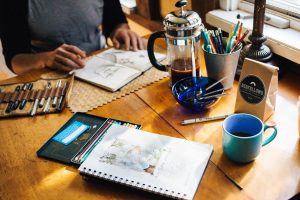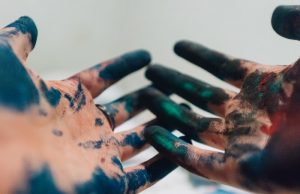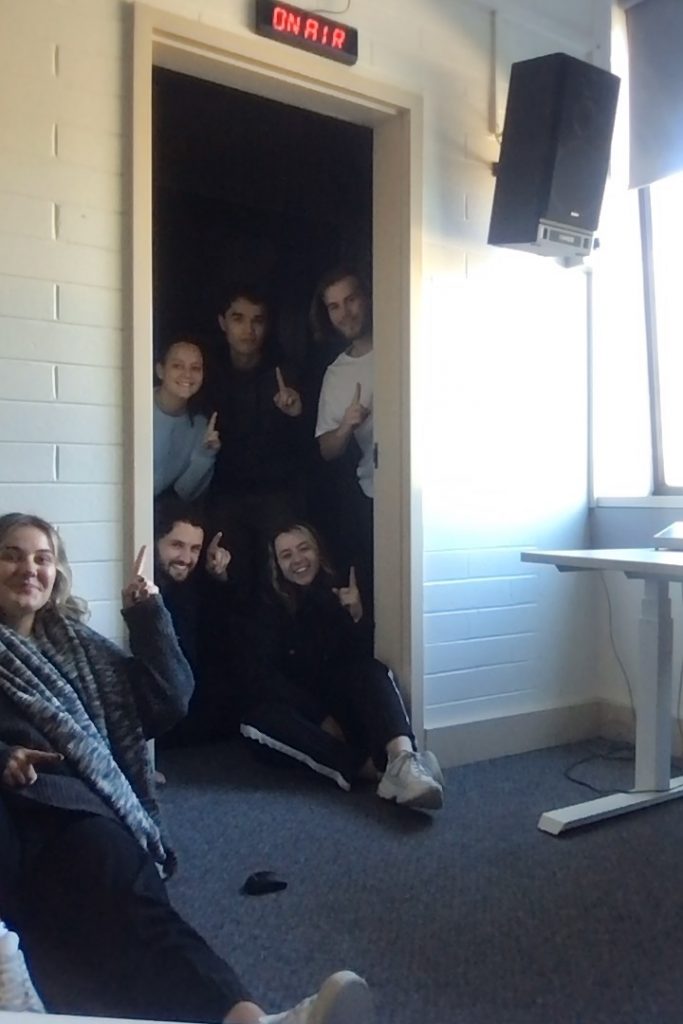5 Ways to Boost Artistic Creativity: Rework the brain and Create
You may believe that some are born with the great gift of creativity, and that may be true; however, that does not mean that creativity can’t be discovered and cultivated as well. It is something that needs to be exercised and refined, and now is the perfect time to get started.
Whether you want to simply refresh your brain or become the next Picasso, here are five tips to boost your artistic creativity at home.
1. Be bored
“The gods were bored; therefore they created human beings.” – Soren Kierkegaard
Take time away from electronics and other distractions just to lie on your couch and stare at the ceiling. Not having your mind focused on or engaging with anything will definitely become boring, but that’s the point.
Studies have show that a wandering mind during boredom “may foster creativity, as individuals can incubate creative ideas after having been engaged in an unrelated train of thought”. Your thinking will go into places that aren’t frequently visited, and this can be the kickstart to new innovation that’s not clouded by other influences.
2. Distort & familiarize
Try to expand and change how you see things in your everyday life. What you see normally becomes blurred and overlooked. You don’t tend to focus on something that is always there. So if you train your mind to really look at it (the plant in the corner, your coffee in the morning, or the doorway, could be anything) and alter it in weird, confusing, or impossible ways, you’ll be training your brain to relook at things. Jot these ideas down with words or draw them in a journal so you can revisit or change them later.
Then, with the things that you aren’t normally exposed to, expose yourself to them. Whether this is artwork from different countries, a new cafe you’ve never been to, or even food that you don’t normally eat, try to see new people, places, and things. Once you start to see various perspectives, you will see different shapes, colors, and influences that you can incorporate into your own work later on.
3. More ideas… & then some
Once you find inspiration, you may be ready to get the ball rolling and dive in, but take a second to generate other versions of the same picture. Sketch out your original idea. Then draw it again, but a little different. Whether you mix up the colour scheme, the angle of the subject, or even minor details, you will be feeling out how little changes can make a huge difference.
This will then help you think of how your next works will have endless possibilities to play around with. Generating more ideas may seem pointless at first, but repositioning your mind could lead to a piece that you love more than the original and will train you to creatively manipulate each element of your art.
4. Visualize your starting point
Documenting your progress will not only be nice to see how far you’ve come, but will make it easier to expand on ideas you’ve already had, just with a more refined direction. Begin with simple doodles or create inspiration boards in your room that will be a physical example of you’re beginning and how you want to move forward. Then you can experiment with colors and mediums to find what you prefer.
5. Use your hands & get messy
Whether you draw, watercolor, paint, or sculpt, engaging in the thing you want to get better at will make it easier to try. This may seem like obvious advice, but it can be hard to get started. You don’t have to be great at it, you don’t even have to be good, but getting a sketchbook and trying different things on each page will give you a feel of what each pastel or brush or colourant can do.
If you’re more about the 3D style rather than flat works, you can run to the store and grab cheap clay to practice with. If you don’t like what you create, you can just smash it and rework it again until you reach your desired conclusion. Working and reworking is key, so don’t be afraid to get your hands and clothes dirty.
Becoming more artistically creative is not only about practicing technical skills like shading and coloring. You may just need to change how your brain views and processes things. Find inspiration and don’t be afraid to try, fail, and try again.











Be the first to comment!